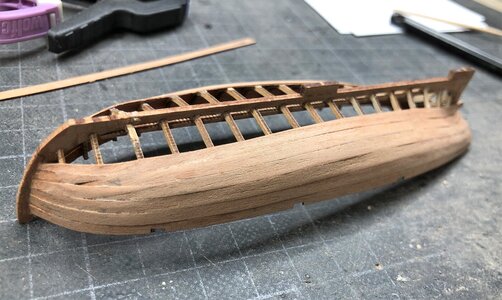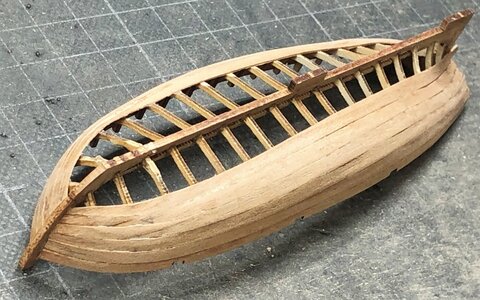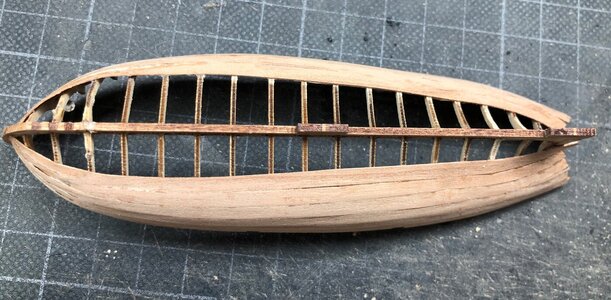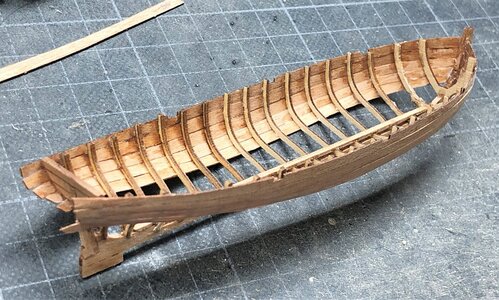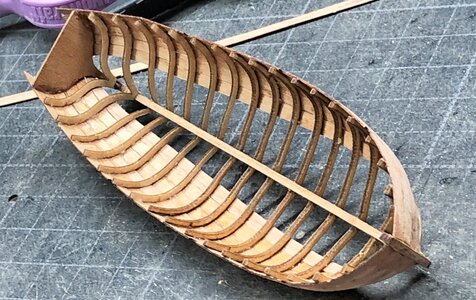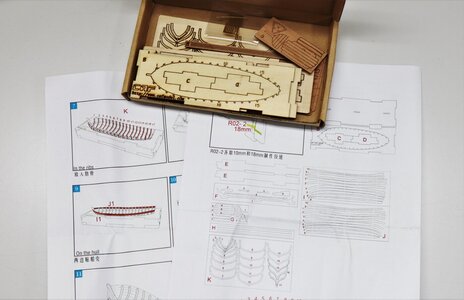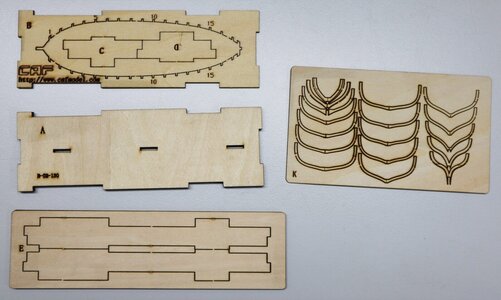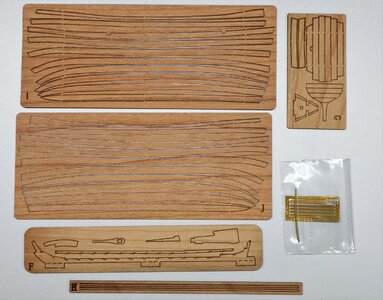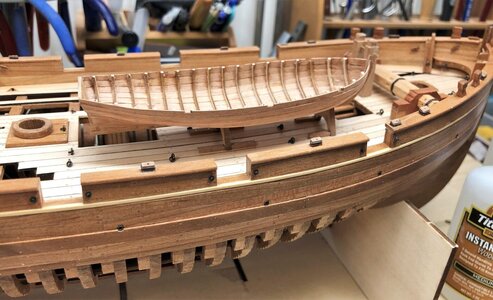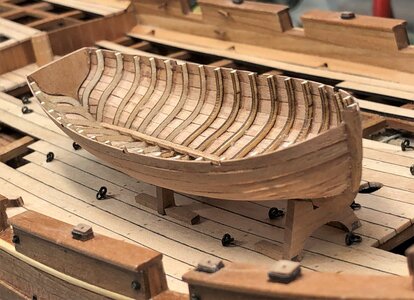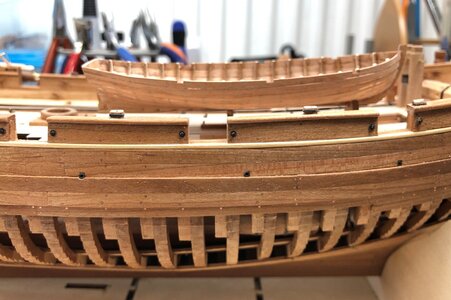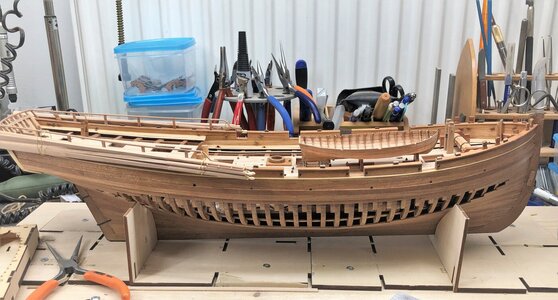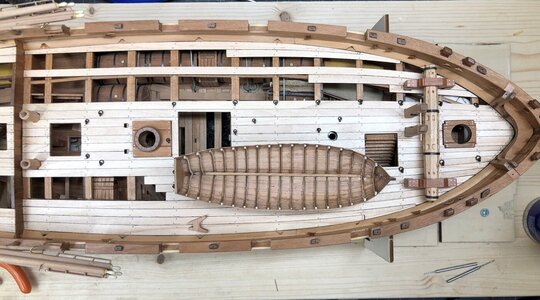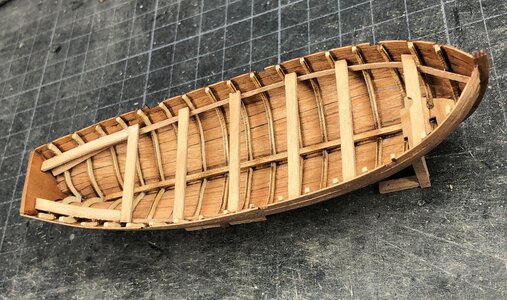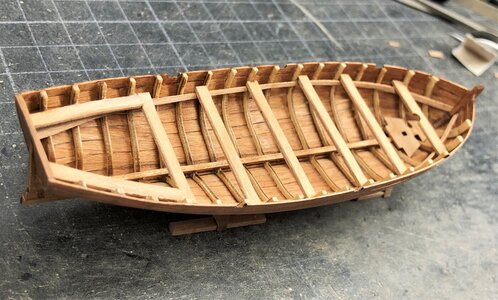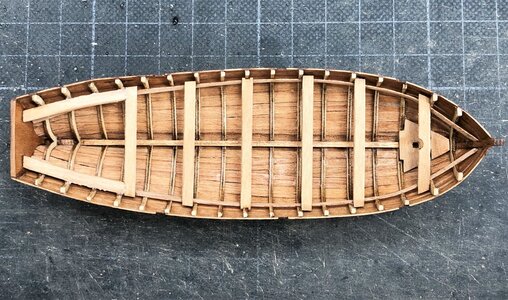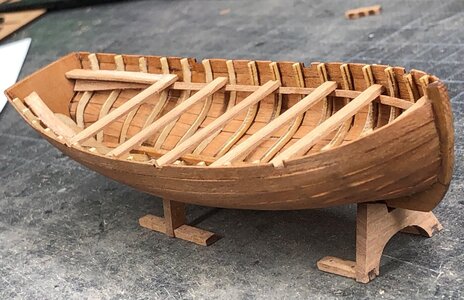Sieht saugut aus. Looks very impressive and seems absolutely coherent. I think my question from before has been settled.
-

Win a Free Custom Engraved Brass Coin!!!
As a way to introduce our brass coins to the community, we will raffle off a free coin during the month of August. Follow link ABOVE for instructions for entering.
-

PRE-ORDER SHIPS IN SCALE TODAY!
The beloved Ships in Scale Magazine is back and charting a new course for 2026!
Discover new skills, new techniques, and new inspirations in every issue.
NOTE THAT OUR FIRST ISSUE WILL BE JAN/FEB 2026
- Home
- Forums
- Ships of Scale Group Builds and Projects
- Le Coureur 1776 1:48 PoF Group Build
- Le Coureur 1776 1:48 Group Build Logs
You are using an out of date browser. It may not display this or other websites correctly.
You should upgrade or use an alternative browser.
You should upgrade or use an alternative browser.
LE COUREUR - french Lugger 1776 - POF kit from CAF in 1:48 by Uwe
Lovely work, Mon Amie, unfortunately, mistakes have happened. The only way to avoid mistakes is to stop doing 
...and as always question from Jim. will you leave one side open or partially open, or plank the entire boat's hull?
will you leave one side open or partially open, or plank the entire boat's hull?
...and as always question from Jim.
@pianoforte :
You made the question in the same time I prepared the last post. I plan to install the boat on the deck - but this final step will be done when the rigging works is finished
@Jimsky :
I will fully plank the boat. I was shortly thinking about this possibility when I had the sceleton on top of the deck, but decided differently. One argument against is the fact, that the original boat frames were made out of three parts, one floor timber and two top timbers. In such a model in 1:48 more or less hard to make........
But maybe somebody else will do it ..... I am looking forward to see the solution by other collegues.....
You made the question in the same time I prepared the last post. I plan to install the boat on the deck - but this final step will be done when the rigging works is finished
@Jimsky :
I will fully plank the boat. I was shortly thinking about this possibility when I had the sceleton on top of the deck, but decided differently. One argument against is the fact, that the original boat frames were made out of three parts, one floor timber and two top timbers. In such a model in 1:48 more or less hard to make........
But maybe somebody else will do it ..... I am looking forward to see the solution by other collegues.....
Hello, Mon Amie. Do boat planks come scored or? 
You mean already in the necessary shape? Yes, they are laser cutHello, Mon Amie. Do boat planks come scored or?
Thanks, yes, this is what I mean, they are already pre-shaped.You mean already in the necessary shape? Yes, they are laser cut
Beautiful workmanship Uwe, I am learning so much following your log. Your log sections on the cannons are particularly instructive.
Many Thanks my friends for the interest, your kind comments and all the likes received - much appreciated
planking is finished - not as accurate than wanted, but the boat is closed and could swim - the next will get better
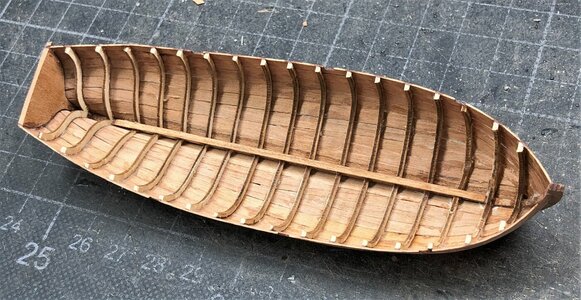
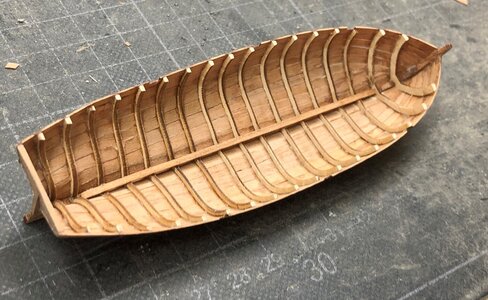
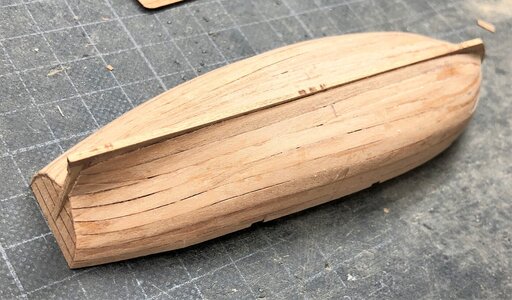
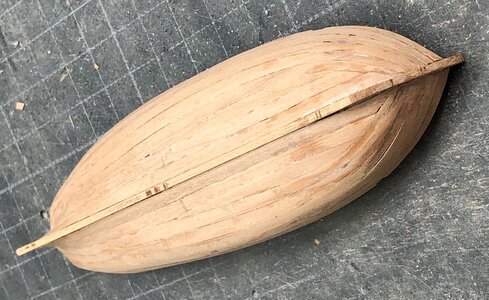
the result after some cleaning (of rest of glue) and using some oil....... looking not so bad
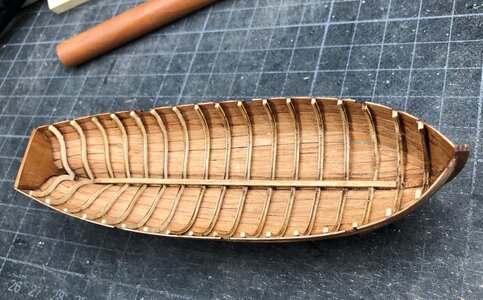
planking is finished - not as accurate than wanted, but the boat is closed and could swim - the next will get better




the result after some cleaning (of rest of glue) and using some oil....... looking not so bad

That can do more than just swim, it also make a good impression. I like it very much.
Very nice work, Uwe.
Here me again with yet another question, Uwe, I know the char on the planking sides can add to imitate caulking when gluing tight. However, I also know, that laser machines cut the material at a small angle. Question: Do you have to remove the char to make it 90 degrees or do you leave it as it is, the planks are fitted together close and tight?
I remove in general the char - also here with the planks, although the planks are maybe 0,5mm thick - in principle the planks of this boat are fitting very well.Here me again with yet another question, Uwe, I know the char on the planking sides can add to imitate caulking when gluing tight. However, I also know, that laser machines cut the material at a small angle. Question: Do you have to remove the char to make it 90 degrees or do you leave it as it is, the planks are fitted together close and tight?
Nevertheless I made somehow a mistake, and still do not know where and when it happened - I guess iwth the next boat I will make it better.
Many Thanks, that you all were very kind with myself, because nobody mentioned or commented my planking mistake
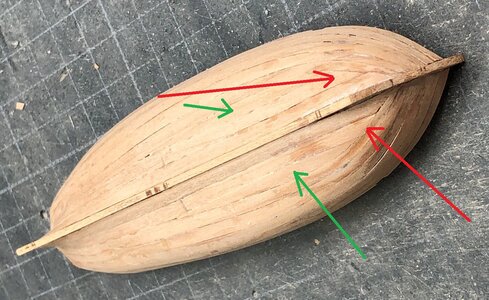
the red arrows are showing the last three planks which should not lay like this, but should reach the keel
the green arrows are showing the filling "plank" which was necessary to be made out of scrap - I guess, that I installed them in the wrong direction
I think, that the mistake happened by myself and not by the kit .......
The positive effect:
When the boat is installed on the deck on the small three basis, this planking mistake is not visible - at the end I still have the possibility to paint the outside hull of the boat.....
Looks absolutely good, das sieht keiner.
Hi Uwe!
That looks good!
Anyone who has ever built such a fragile boat knows the difficulties. The ribs and planks are very fragile. When the top plank (I1 and J1) is in place, the whole structure becomes much more stable.
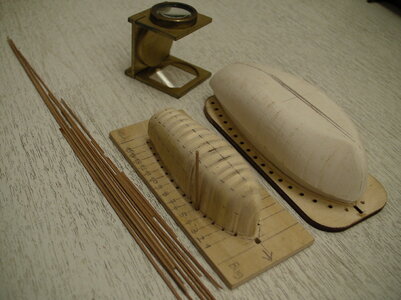
Personelly, I like the "Overhead method" better. From the plan, glue each frame to a cheap plywood board (usually 5-6 mm thick) and saw out the inner part of the boat. Then glue all the frame shapes together and finally sand them. And on the top of this come self-sawed strips as ribs, wet or dry bent with soldering iron. The keel and the stern plate follow. Finally, plank everything with 0,5 mm wood stripes (with adjustment of the respective width and pre-bend with heat).
The advantage of this is that the fine ribs are protected and it is easier to pin the planks to the wooden form and also to apply some pressure. In this way, all shipsboats can be rebuilt from plans.
Best regards
Thomas
That looks good!
Anyone who has ever built such a fragile boat knows the difficulties. The ribs and planks are very fragile. When the top plank (I1 and J1) is in place, the whole structure becomes much more stable.

Personelly, I like the "Overhead method" better. From the plan, glue each frame to a cheap plywood board (usually 5-6 mm thick) and saw out the inner part of the boat. Then glue all the frame shapes together and finally sand them. And on the top of this come self-sawed strips as ribs, wet or dry bent with soldering iron. The keel and the stern plate follow. Finally, plank everything with 0,5 mm wood stripes (with adjustment of the respective width and pre-bend with heat).
The advantage of this is that the fine ribs are protected and it is easier to pin the planks to the wooden form and also to apply some pressure. In this way, all shipsboats can be rebuilt from plans.
Best regards
Thomas
Last edited:
I just realized, that I started this model already end of September 2020 - so already 13 months ago
-> We can see how fast the time is running:
1) on our children and grand-childs > how fast they are growing
and
2) how slow our models growing - where are all the hours gone in the workshop ......?
-> We can see how fast the time is running:
1) on our children and grand-childs > how fast they are growing
and
2) how slow our models growing - where are all the hours gone in the workshop ......?
Time fly's but there no rush, coming on very nice indeed Uwe



